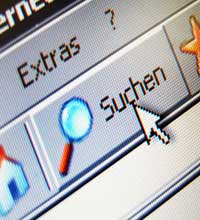Search Engine Optimization (part 2)
Search Engine Optimization (SEO) once dealt purely with the honing of websites to feature prominently in the SERPs (search engine results pages). Webmasters would burn the midnight oil adjusting meta tags, page titles, headers and page text in an effort to bring their sites to the first pages of search engines.
SEO now incorporates techniques to deliver well-formed, semantically correct, logically marked up and above all well written web pages which search engine spiders can readily parse and retrieve.
Every web page is constructed from HTML (HyperText Markup Language) tags which serve to define page structure and contain the page elements. In recent years the shift has been toward use of XHTML – the ‘X’ standing for eXtensible – as the Web adopts a more open architecture for the transmission and manipulation of information.
A well-constructed page utilises specific tags which have considerable significance over the visibility of a page within the SERPs and which, when properly used, convey relevancy to search engine algorithms. Title and description along with headings are used to summarise content, or copy, within which sit judiciously placed keywords and phrases. Judiciously because overuse may constitute abuse; dependant on the market, anywhere between three to 7% density is the norm, the ratio between keyword or phrase appearance to total page copy.
But there are instances where no matter how well optimised a page is, it’s content may remain unindexed: dynamic pages, those configured and delivered on the fly dependant on user selection parameters. These pages – produced using programming scripts such as ASP, PHP, Perl or proprietary languages like Cold Fusion – exhibit specific characteristic which search engine spiders often simply ignore because there is no guarantee the content will not change over time and whose signature characters - ?, & - in the links indicate the likely presence of a database within which a spider could become bogged down trawling thousands of pages. Ecommerce sites fall into this category, where a user query will pull out specific content from a database of products which may contain millions of items.
Fortunately there exist both techniques and software to obviate these challenges and a competent optimiser will observe these in his armoury. The point being, SEO is as much to do with preparing a page as it is to dealing with the shortcomings of search technology.
Build Better Tighter and Lighter
As the Web has matured and the sheer volume of information has ballooned, competition for visibility within the first few pages of the SERPs has encouraged the move towards more streamlined, standards-compliant code. Part of the reason for this is to feed spiders more easily parsed copy. Pages developed to W3C (World Wide Web Consortium) standards are invariably lighter and more efficient and are generally better laid out and semantically more precise. Code bloat – particularly through use of tables for layout – is avoided by segmenting page sections into containered elements, and the increasing adoption of CSS (cascading style sheets) further reduces unnecessary markup on the page by removing presentation – how something looks and where it is positioned on the page – from pure content. All of which makes for quicker loading, better understood pages from a search engine’s perspective.
An additional benefit of modern coding techniques, as touched on above, is accessibility: websites are made more visible – not just to search engines – but to individuals with cognitive or physical disabilities whose assistive technology (AT) devices, screen readers and similar, are better able to read and interpret content, resulting in wider audience reach. And, of course, users of modems not enjoying the speedy delivery of broadband internet connections download pages more swiftly since, quite apart from their lighter weight, tableless, CSS-supported pages render faster in the browser.
An understanding of well-formed document architecture, a clear knowledge of HTML tags and strong copywriting skills are the hallmarks of formidable Search Engine Optimization, and offer the strongest platform through which to market a website.

